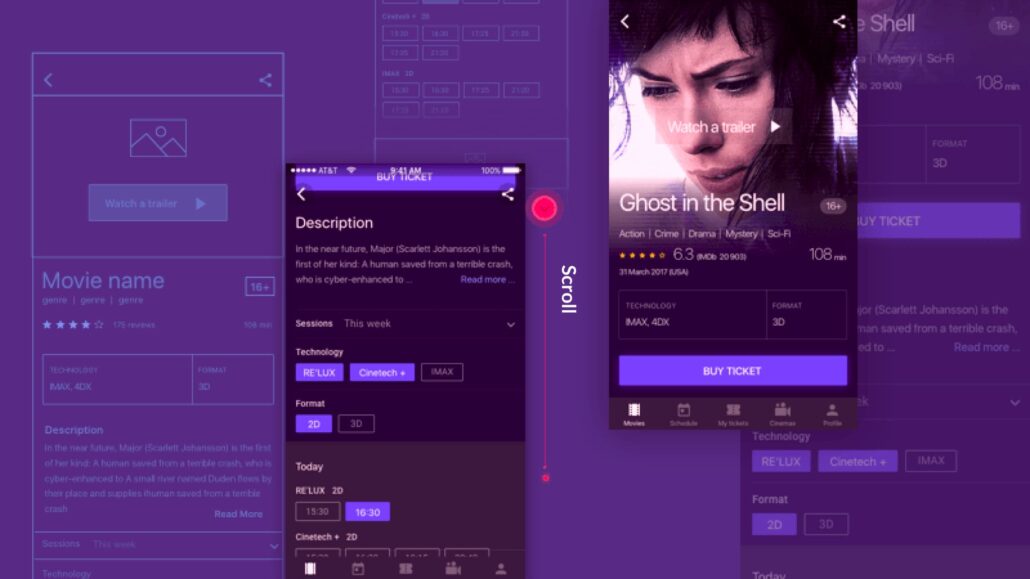The mobile application marketplaces provide a plethora of apps that share similarities in appearance. Google Play boasts 2.47 million available solutions, while the App Store offers 1.8 million. The design of a mobile app is a crucial factor in achieving a top-notch interface, impacting user engagement beyond just functionality. Enhancing UI/UX aids businesses in creating successful software by effectively addressing customer problems, providing a competitive edge.
There are inquiries about the duration of UI/UX creation and the design process for mobile apps, considering the associated costs. This article delves into common questions and provides approximate rates for app design work on popular platforms such as Instagram and Uber.
Understanding the UI/UX Design Process and Mobile App Types
To determine the cost of app design and the required development stages, selecting a specific type of mobile application is crucial.
- Native Smartphone Solutions: Developed for Android and iOS platforms, these apps operate efficiently and error-free on a specific platform. Building native mobile apps can be resource-intensive, requiring significant investments of time, money, and personnel.
- Web Applications: Suitable for those seeking affordable mobile app design without compromising quality, web applications have a similar interface to native apps but operate through the mobile browser, eliminating the need for installation.
- Cross-Platform Mobile Solutions: Integrating elements of both native and web applications, cross-platform apps offer streamlined upkeep and reduced design expenses compared to native mobile applications.
After determining the app type, prioritizing workflow is essential in the app creation process. The outcome of app design involves considering user interface and user experience. Software development teams approach design creation in their distinct way. Let’s explore how software companies typically create designs.
1. In-depth Research:
Design specialists analyze competition, business objectives, and target audience during the UI/UX development process to identify user requirements for a customized design.
2. Wireframes Preparation:
Using specifications or requirements, software development companies create wireframes visual schemes of layout and element placement on an app’s screen. Wireframes allow users to visualize potential changes, providing a platform for feedback and efficient modification.
How wireframes look like during the design creation process
3. Prototyping Procedure
The prototyping phase is integral to shaping the user interface of an application. Each screen within the application undergoes individual prototyping, serving as a blueprint for the final product.
Typically, professionals initiate the UI/UX design process for mobile apps by crafting versions tailored for both iOS and Android platforms. The design iterations are customized for diverse devices, encompassing tablets and phones, to ensure optimal performance across the spectrum.
Throughout this phase, IT providers facilitate customer engagement, allowing for suggestions and input via platforms like InVision or Figma. Clients are empowered to choose the prototype that aligns best with their requirements, with options for both clickable and static prototypes readily accessible, a practice commonly observed across many companies, and as a result receive proficient mobile app development services.

Mobile app interface creation flow
The subsequent phases encompass the creation of visual elements such as icons and illustrations, the development of intricate animations, and the computation of expenses for assessing the mobile UI design.
Regional Costs for App Design
How much does it cost to design a mobile app? It mainly depends on country and evaluation processes employed by each IT company. The formula commonly used is hourly rate multiplied by the number of hours spent, resulting in the total application design charge.
For instance, envision contemplating the initiation of a business akin to Uber or Instagram and outsourcing the design aspects to Estonia. The projected cost for Android and iOS solutions would be $12,300, derived from 246 hours of design work at $50 per hour (Estonian hourly mean wage).
In case the app interface appears financially demanding, it is important to acknowledge the substantial remuneration that qualified UI/UX specialists command due to the inherently high value of their services.
Uber and Instagram: Assessment of Design Costs
Uber, established in 2011 as a taxi service in San Francisco, has evolved into a global transportation system, offering over 1.44 billion trips in Q4 of 2020. The success of an app can be attributed to its user-oriented interface, transforming the process of hailing a taxi into an engaging experience reminiscent of a video game, resulting in high user satisfaction.
Typically, designers create the UI/UX interface for one operating system, usually iOS, and then adapt it for the second, Android. Based on this, the Android interface demands 60-70% fewer resources than iOS. Uber’s iOS and Android app design costs vary across regions:
- Central Europe: $10,450 – $20,900
- Western Europe: $20,900 – $41,800
- US/Canada: $20,900 – $62,700
- Australia: $20,900 – $62,700
- India: $8,360 – $20,482
Instagram, recognized for its well-crafted UI/UX interface for graphic-oriented content, conducted extensive research on psychology, art, and science. Despite occasional bugs, improvements, and crashes, the app has garnered positive user feedback. The average app design cost for Instagram-like solutions in specific countries is as follows:
- Central Europe: $9,125 – $18,250
- Western Europe: $18,250 – $36,500
- US/Canada: $18,250 – $54,750
- Australia: $18,250 – $54,750
- India: $5,300 – $17,885
In Conclusion
App design is a complex endeavor that demands expertise for seamless execution. A proficient mobile app development company can provide comprehensive assistance, offering in-depth consultations to address queries and delivering a smartphone solution with a compelling and user-friendly design.